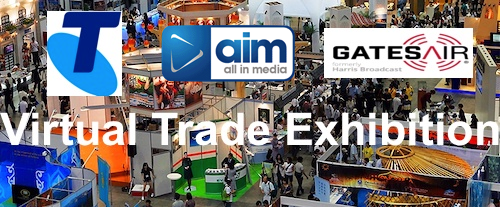radioinfo speaks to Dean Buchanan about the launch.
Nova 96.9 Sydney launched 20 years ago on April 1st.
It was the first metro licence for the then regional DMG Radio group, run by Paul Thompson.
Two decades on, it is timely to look back on the significance of that launch, which was the beginning of the Nova network.
Paul Thompson’s strategy won the day when the licence was auctioned in the year 2000 and, as the network grew, there were more stretegic and tactical moves that kept the opposition guessing.
The first Nova was not an overnight success. In it’s first survey after launch it scored 4s, in the second survey it jumped to 7s and then grew steadily from there. As subsequent Novas launched in the other cities, they jumped to near the top of each city much faster once the format was known.
“It was the first new capital city radio station in many years, the brand was new and fresh, and I think the other really significant part was the price paid for the license, which was around the $150 million mark. That raised eyebrows across the industry,” says Dean Buchanan, who was the station’s first program director and the mastermind of the format along with CEO Paul Thompson and a small close-knit team.
“Of course, what wasn’t publicized at the time [of the Sydney licence auction] was that the plan was not just to have one station in Sydney, but to be able to buy all the capital city frequencies that were coming up and build a network. Of course, you couldn’t do that without having Sydney as the anchor.”
The high price paid for the Sydney licence sent a signal that DMG Radio intended to be a serious player in Australia’s radio market.
Paul Thompson’s licence auction strategy was very smart, says Buchanan:
“Paul bid to a point and then dropped out. It’s a great story, he had a lawyer from Mallesons there as well and she was the final bidder. Paul tells the story beautifully of dropping his shoulders, shaking his head, then, of course, the Mallesons lawyer took over to win the auction and Paul was delighted. No one could figure out what was going on.”
The coming of Nova changed the radio advertising and programming landscape at the time.
“You will remember at the time that Austereo was dominant, they were very much the kings of the castle and ARN was a very comfortable number two. Wow how things have changed in 20 years!
“The competitors had plenty of notice that there was going to be a new licence and a new player in town and they did a great job of filling what they thought were all the format holes and locking in all the big talent. So right from the outset we were looking at a blank piece of paper and asking, what are we going to do with this radio station? We were forced to think differently and forced to think outside the box.
“As you know, radio is as very good at its formulas and rules. So all we did was really just go to the market, go and talk to listeners in Sydney and ask them a few simple questions. What did they love about radio? What didn’t they like about radio? We chose to really study the research and really listen to it. We spent many, many weeks trawling through research and talking to various business leaders and people in the wider industry to really narrow down what we thought the opportunity might be. And the word that keep coming back to us was just be different. The radio stations at the time were becoming somewhat boring with their formulas. Listeners were sick of all the long blocks of ads, predictably at the twenty past and twenty to point in the format cloock, and the same songs over and over. They were sick of the same promotions like the battle of the sexes. All they wanted was something fresh and something new. So there was no genius, we just decided to do was give listeners what they wanted. It’s that simple.”
Nova launched with Merrick and Rosso with Jen Oldershaw as the breakfast team, poached from triple j. They sounded different from the other breafkast teams on air at the time. When they joined they didn’t even know what the name of the station would be. While Merrick and Rosso did know what their shift would be, no other staff knew what time slot they would have or any other details of the name or the format, they joined because they were excited by the promise of what the new station would do.
“I’m really proud of the talent lineup we launched all the Novas with, and a lot of those talents are still doing fantastically well.
“We were forced to think outside the box and find talent, who we believed with some coaching and time and exposure, had the raw ability to go on and be hugely successful. Merrick and Rosso were part of a team of young talented people who agreed to join us..
“When we were talking to various people, the thing we were looking for most was attitude that they had an open mind, wanting to doing something different. When selecting them we asked ourselves were they excellent at the base craft of radio and did that have something to say? Very simple criteria in defining what that magic mix was.
“When Paul and I went down to see Merrick and Rosso’s manager Kevin White in Melbourne, the boys were on Triple J and doing particularly well with standup comedy. Coming to commercial radio was the last thing on their list because their perception was that we would do Battle of the Sexes and play the current pop artists of the day. So they weren’t that excited about the prospect of joining a commercial network. When we took them through our philosophy, what we wanted to do, how we made it different and how we were prepared to take some risks to stand out they were interested. We told them how we were prepared to fail or divert success to get where we wanted to go, so they joined us.
“I got really excited about it and and I think they were really gutsy to say yes, there were certainly plenty of people who sat no to us. And I wonder what they think today.”
The music also was different, Nova played more pop tracks that were not on other playlists and they took risks with new artists, especially Australian artists.
“The philosophy behind the music was a real attack, if you will, on traditional radio thinking, that people only like one genre of music.
“So there was a pop station and there was a rock station and there was an AC station and an oldie station. What that theory predisposes us to is thinking that people who like rock listen to rock or people who like pop listen to pop songs. We started working our way through the market research and found a large audience of people that liked all genres of music. Then more importantly, we found a big body of music that had never been played on commercial radio in Australia. Artists like Moby, for example. And there was a whole bunch of great Australian artists who weren’t getting the mainstream radio play that we felt they deserved. So that was really the start of putting it together. We called it train wreck programming where we would play Casey Chambers ‘Not Pretty Enough’ into a Metallica song or into a Moby song.
“We very purposely mixed up the genres and the tempos, which made listening to the radio incredibly interesting. We pulled in some commercial discipline around it and the record industry and the artists loved that. They knew if they brought on a song that was half decent and was Australian, we would walk into the studio and put it straight on the air and and would really back it. In those early days it was people like Dennis Hanlon from Sony and Michael Chug from Chug Entertainment who got behind us before we even had any ratings to suggest that we even had listeners. I’ll be eternally grateful to them and to the many artists who went, ‘yep, we like the kind of guys’ and they backed us.”
The first few ratings were “pretty awful,” according to Buchanan, who says the success of the first station was “over two years in the making.”
In Melbourne, the second station to launch, Nova became number one in 10 weeks and there were similar patterns as the other Novas launched, but Sydney was the first and took a while to show ratings success.
“The ratings started off reasonably poorly, we were around three or four per cent, but we we could see in our internal tracking that we were gaining an audience, particularly with those under 30. We really set out to make sure what we called the chattering classes thought we were different and good. Journalists like Peter Holder and punlications like radioinfo started writing about some of the crazy stuff we were doing, so that was particularly helpful. Our philosophy was we need to be good enough for long enough that when something changed in the market we could take advantage of that. For us, that was really developing Merrick and Rosso into a rock solid breakfast and the same with all the day parts. Then finally things changed at 2Day breakfast and Wendy Harmer left, the show was coming to the end of its life cycle, so very quickly the balance tipped and and we went to number one and stayed there for about a year.”
The ratings for Nova are not as strong now as they were in its first few years but Buchanan points out that the network is “still a powerhouse under 40.”
“It’s a it’s a mature brandnow. It’s really not for me to really have an opinion on that, except to say the ongoing strength in the 18 to 39 demographics is the way the brand was designed. The majority of advertisers work to specificly target audiences and know that the station continues to do an excellent job for its target audience and has done so for the past twenty years. I’m really proud for that.”
Dean Buchanan was with Nova for many years then returned to his native New Zealand as Group Director of Entertainment at NZ broadcaster NZME. He is now back in Australia running his own talent management company, DRB Entertainment with a boutique range of radio and media personalities on his books.
There is an informal get together of some of Nova’s launch team tomorrow to mark the anniversary.
radioinfo has been reporting on Nova and the rest of the industry right through the past 20 years. Check out the tag cloud below and skip back to our old reports to look back on some of the station’s highlights.
Subscribe to the radioinfo podcast on these platforms: Acast, Apple iTunes Podcasts, Podtail, Spotify, Google Podcasts, TuneIn, or wherever you get your podcasts.




